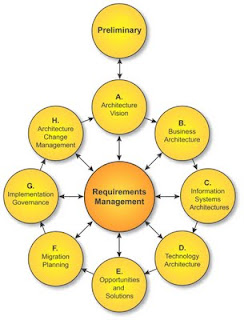The Technical Communication Framework (TECOF)

In this third episode of my series about lessons learned as an ICT Architect, I will explore the possibilities of reusing the general ideas behind the TOGAF framework as a starting point for a technical communicators framework. ICT Architects use frameworks like TOGAF as a detailed method and set of tools for developing an enterprise architecture. Every component in this method delivers a visible addition to the end product. TOGAF 9 Components The TOGAF 9 framework for Enterprise Architecture consists of 8 components : Architecture Vision: this describes in scenarios how the new solution or application will meet the business goals and strategic objectives and address the stakeholder concerns when implemented. Business Architecture: models that describe how the high-level business requirements (from the Architecture Vision) can be mapped to actors, roles, business functions, business processes and services. Information and Application Architecture: this focusses on identifying
